Did you know that there are more than 10 frog and toad species found in Pennsylvania or the surrounding states?
Finding a Guide to the Most Common Frogs in Pennsylvania or surrounding states was not as easy as I thought. Some guides were too broad and others didn’t provide enough information about their diverse characteristics.
That’s why I created a list of the 10 MOST Common Frogs in Pennsylvania.
This ultimate guide will not only give you the most common frogs in Pennsylvania or surrounding states but also important and interesting facts about them.
10 Common Frogs in Pennsylvania
#1. Northern Spring Peeper
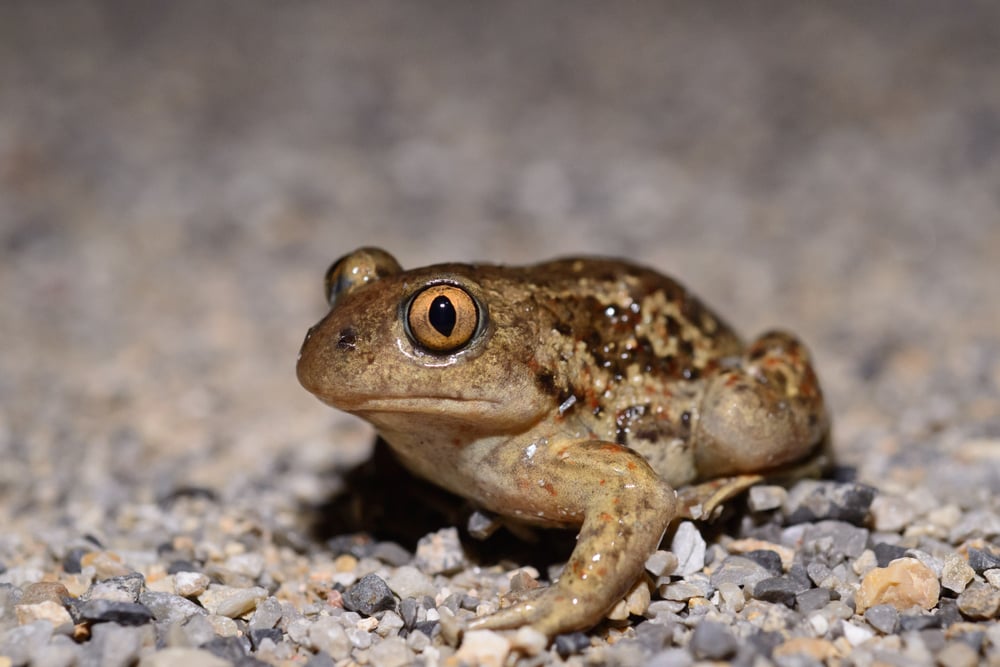
Scientifically known as Pseudacris crucifer, the Northern Spring peeper is one of the most common frogs that you can find in Pennsylvania or surrounding states and you have most likely heard it in the spring.
Identifying Characteristics and Facts
- Northern Spring Peepers have smooth skin and you can find them in different shades of colors such as brown, green, or tan.
- They live near ponds and in swampy areas, and also in marshy woods.
- They feed on most small insects.
- This frog has many predators such as owls, snakes, and some birds.
- Have X-shaped patterns on their backs.
- They breed in ponds with fresh water and without fish.
- During winter, they hibernate in soft mud or other places such as under the back or trees, or under logs.
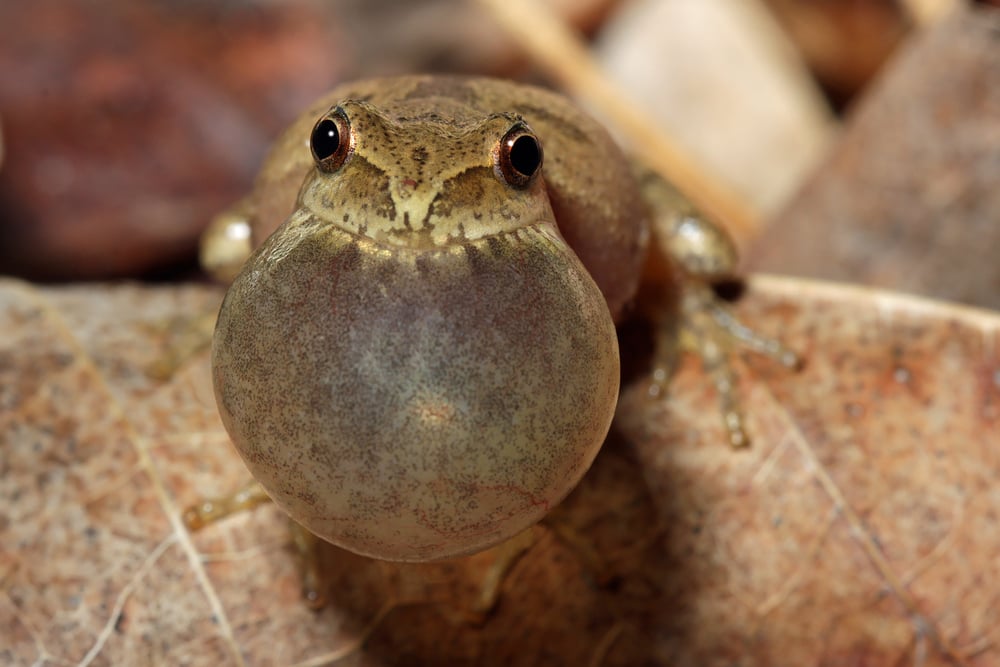
Are Northern Spring Peeper Frogs Poisonous?
These frogs are not poisonous. Therefore, they are not harmful to most other animals including dogs, humans, and other pets that you may have at home.
It is, however, important to be cautious of touching them since they carry viruses and bacteria such as salmonella. These viruses may cause some diseases if you touch them.
#2. Western Chorus Frog
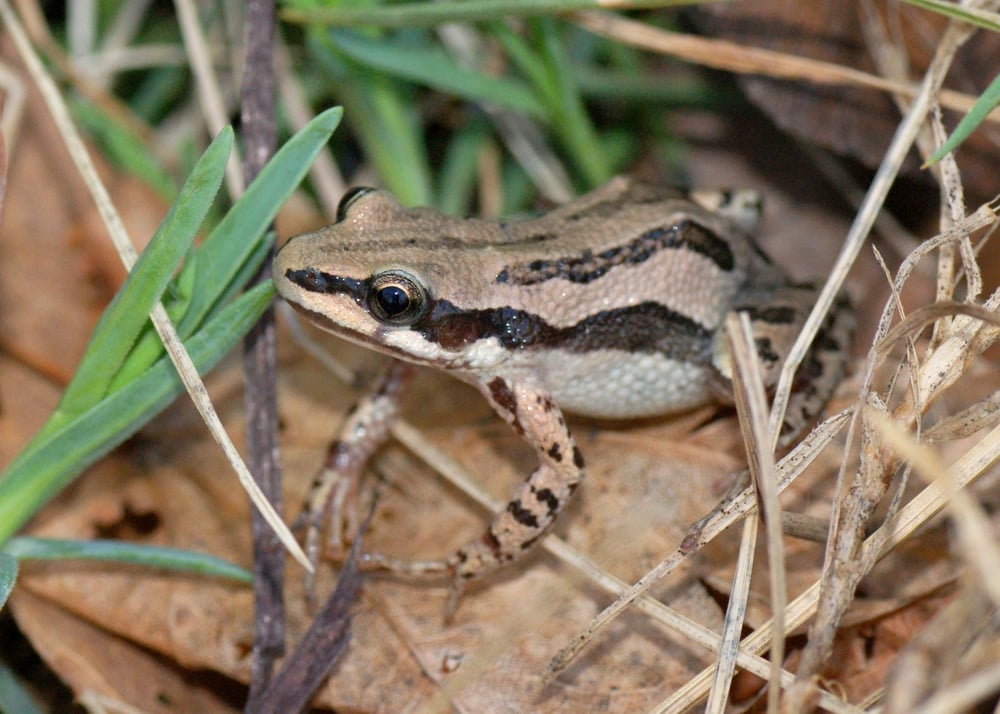
Scientifically known as Pseudacris triseriata, the Western Chorus Frog’s name implies that it makes a lot of noise, and when many of them combine, it sounds like they are making a chorus. That’s why this is one of the most common frogs in Pennsylvania.
Identifying Characteristics and Facts
- Western Chorus Frogs are 1.9 – 3.2 cm in length.
- They lay their eggs in April through May.
- They can reproduce between 500 and 1500 offspring.
- Three dark lines run on its back while one larger line is on the flanks.
- They have a white line that runs from the upper lip and even up to the shoulder.
- The color ranges from brown, red, olive, and gray.
- They live in terrestrial and temperate habitats including swamps, marshy areas, forests, and open damp areas.
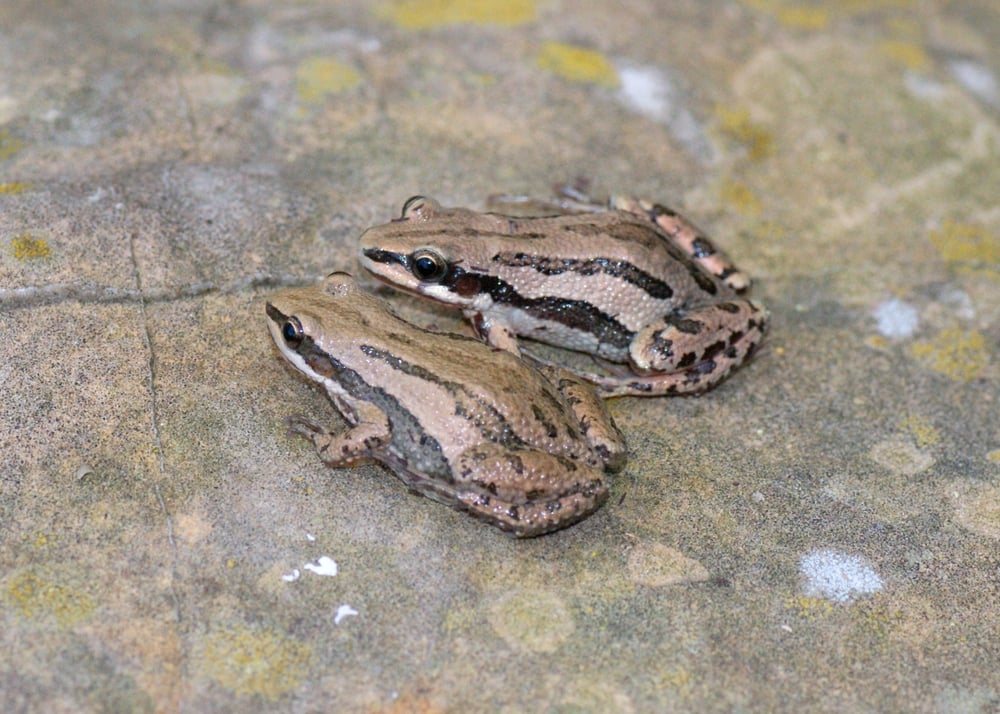
Are Western Chorus Frogs Poisonous?
Just like the Northern spring peeper, the Western chorus frogs are not poisonous to humans nor to pets such as cats and dogs.
In fact, these frogs can be so helpful. According to Carleton Arboretum Surveys, these frogs are good indicator species.
This means that their behavior will tell you whether there are toxic substances or pollution in the environment or not. When the environment is free of pollution and substances that can be toxic, these frogs reproduce and are healthy.
Not only that, but this frog is essential in controlling insect populations in Pennsylvania.
#3. Grey Treefrog
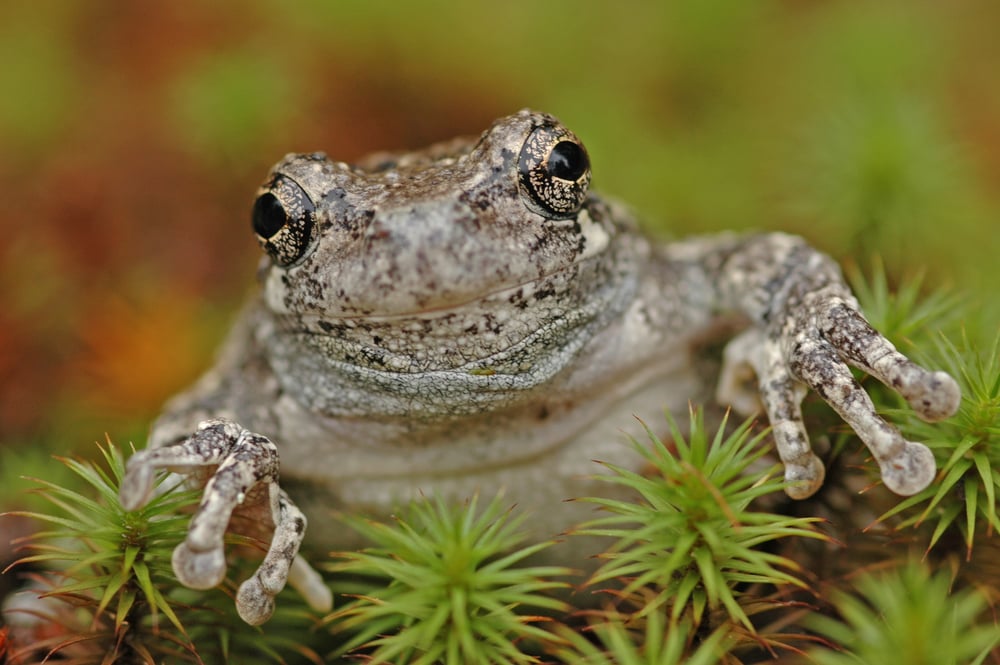
Scientifically known as Hyla versicolor, the Grey Tree Frog is easy to identify. These frogs are common and fairly widespread in Pennsylvania.
Identifying Characteristics and Facts
- This frog has a gray color but their color may change to green.
- They have warty to granular skin with a snout-vent length of between 3 and 5 cm.
- They are mostly found in woodlots and swamp forests.
- This frog makes loud trill calls especially from late April through July.
- They have white spots underside of the eyes.
- They have a dark banded pattern on the leg’s upper surface.
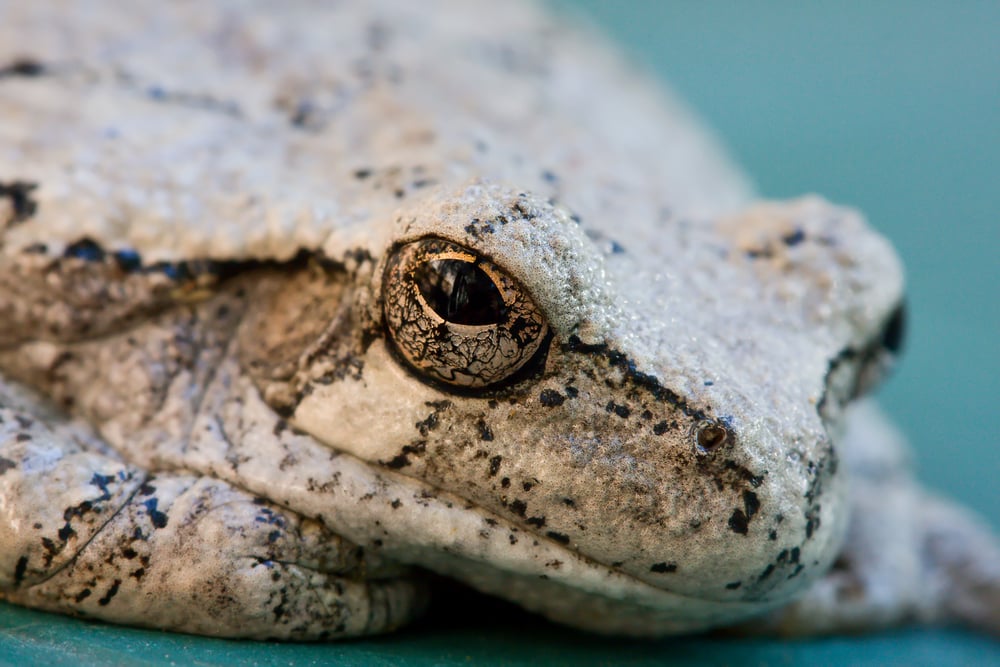
Are Grey Tree Frogs Poisonous?
This is one of the frogs that can be poisonous when threatened. It can produce some secretions on the skin that can irritate if touched.
These secretions can be extremely irritating and that is how they defend themselves from predators.
#4. American Bullfrog
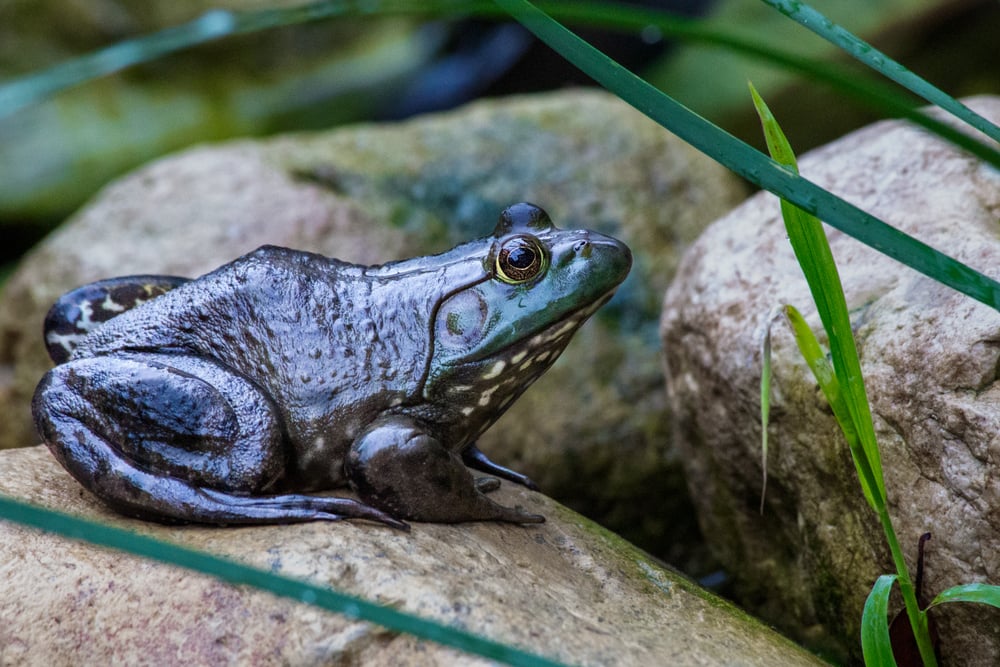
The American Bullfrog is scientifically known as Lithobates catesbeianus and these frogs can make a sound that resembles that of a bull bellowing?
Identifying Characteristics and Facts
- The American Bullfrog has smooth skin.
- They are green to brownish on their backs.
- They are fairly large and have wide heads.
- On top of their heads, they often have some black polka dots.
- Their eyes and eardrums are golden and large respectively.
- Their underside is whitish.
- They have fully webbed hind feet.
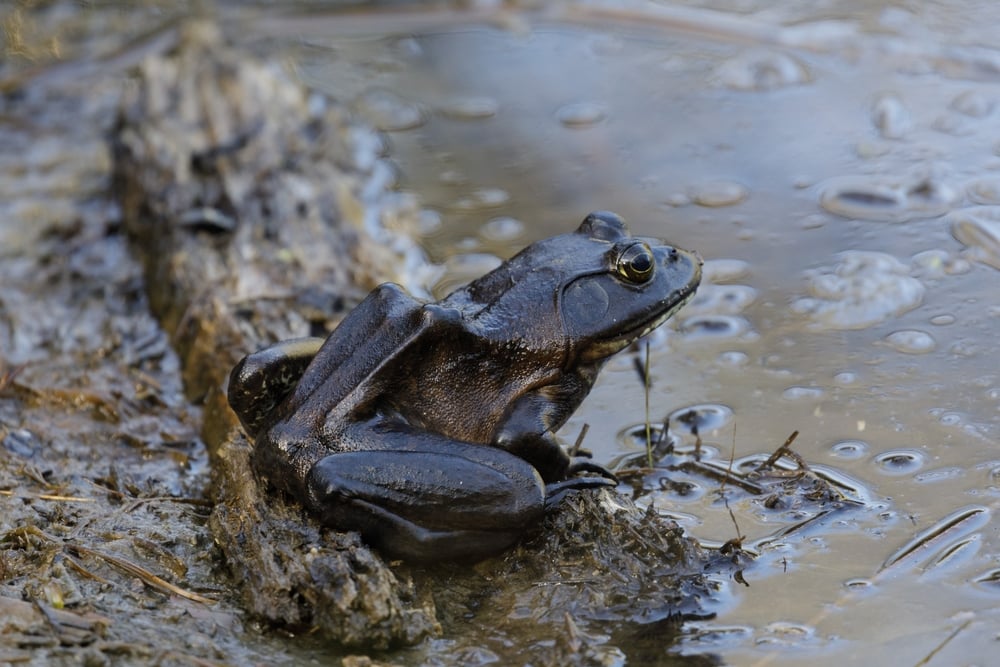
Are American Bullfrogs Poisonous?
While American Bullfrogs are part of the popular delicacies that are eaten in the United States, they can be potentially harmful to humans and pets.
American bullfrog secretes some poison behind their ears, but it does so as their defense mechanism, just like in all other frogs and is of minor irritation to humans and pets.
#5. Wood Frog
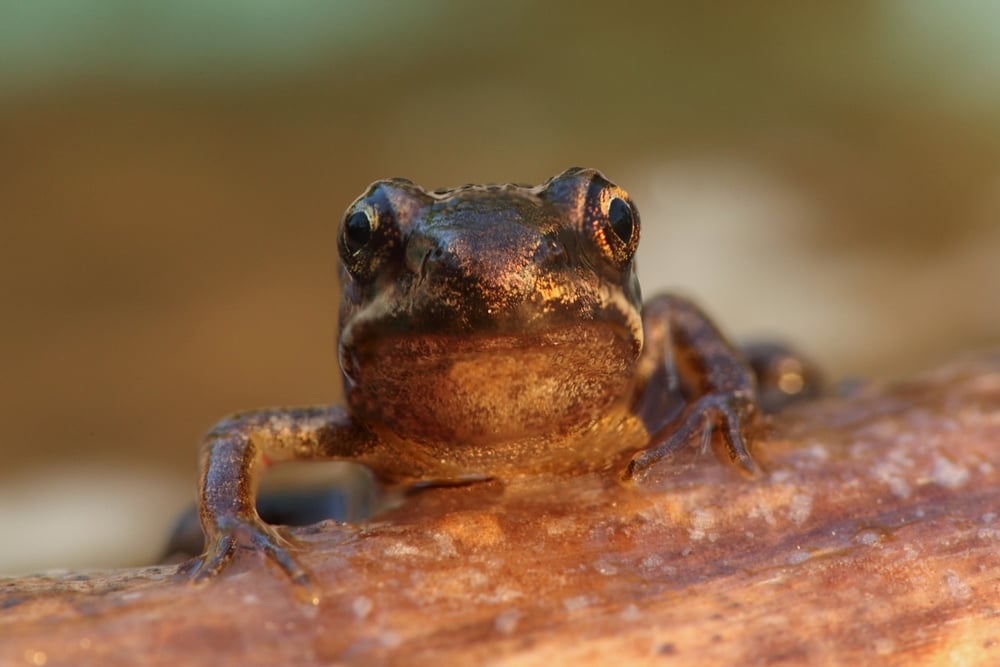
Scientifically known as Lithobates sylvatica, this frog looks like the bark of a dried tree which helps that adapt in the woods.
Identifying Characteristics and Facts
- Wood Frogs are about 3 inches in length.
- They have black markings that run across their eyes.
- They have the capability to vary their colors.
- Females are a bit larger than males.
- They live in terrestrial habitats and are mostly found in forests.
- They are diurnal and hence active during the daytime.
- Wood Frogs have a white stripe mostly on their upper lip.
- They have a yellow, white, or green belly.
- They hibernate during the winter.
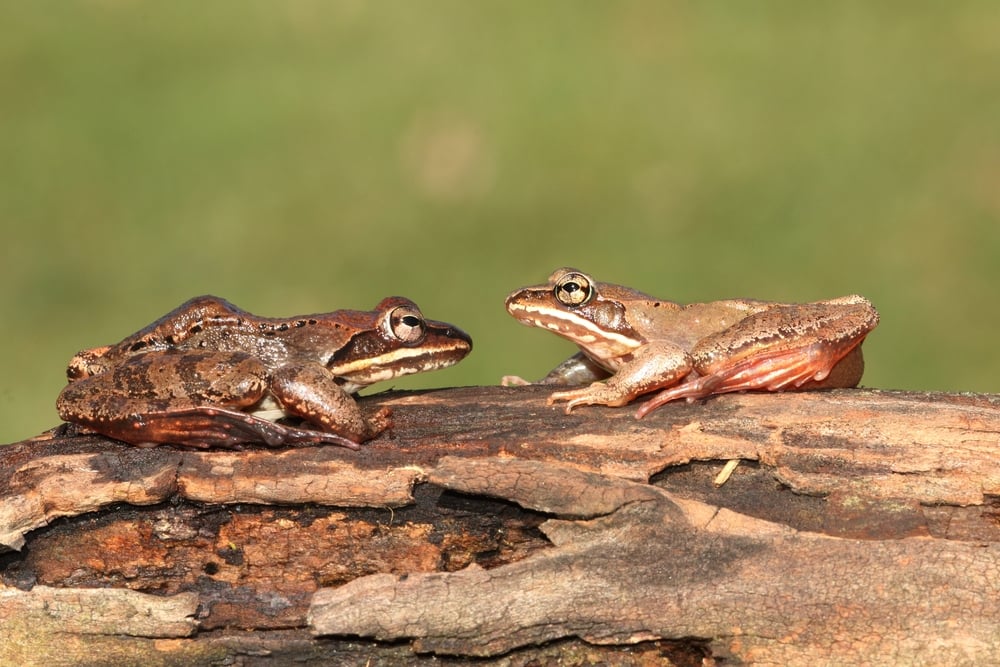
Are Wood Frogs Poisonous?
Like most other frogs, they do secrete some poisonous substances that can be harmful to their predators. However, this poison does not harm humans or large animals.
Just like other amphibians or frogs, they are also useful environmental indicators. Therefore, when there is a reduction in their numbers, it is a great concern and that could mean the environment is polluted.
#6. Pickerel Frog
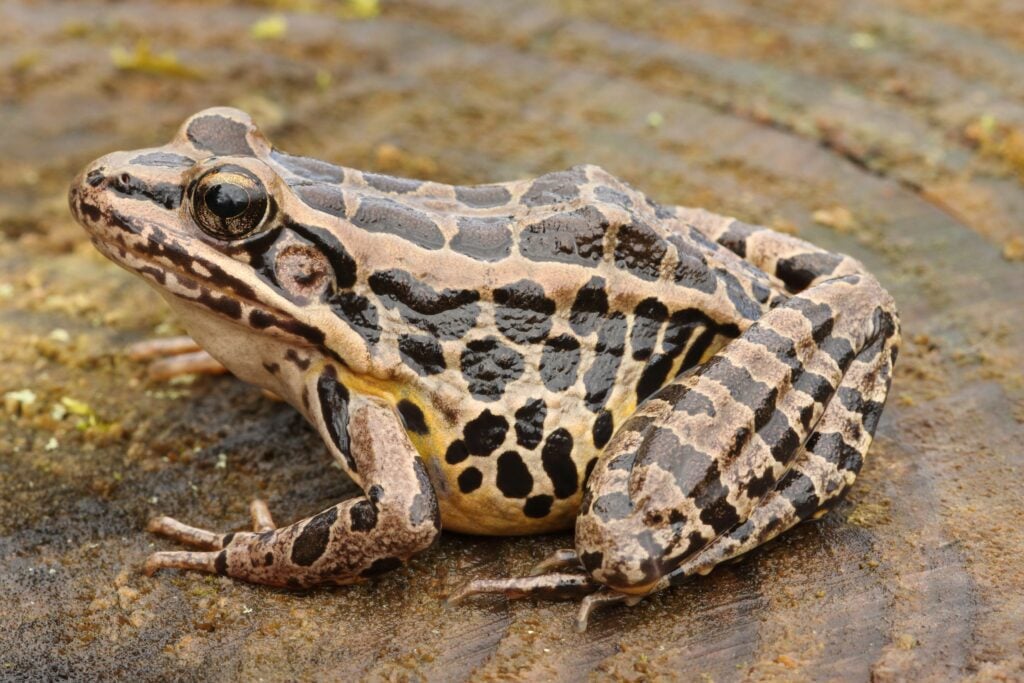
Scientifically known as Lithobates palustris, you cannot talk about the common frogs in Pennsylvania without mentioning the pickerel frog.
Identifying Characteristics and Facts
- They are fairly large and about 1.75 – 3.5 inches.
- Pickerel Frog males are smaller compared to females.
- They are spread across different habitats but are mostly found in cool wooden streams.
- They eat spiders and insects among other small invertebrates.
- Pickerel Frogs have light brown to olive green in color.
- Pickerel Frogs have two dark brown polka dots-like rows on the back.
- They have paired vocal sacs.
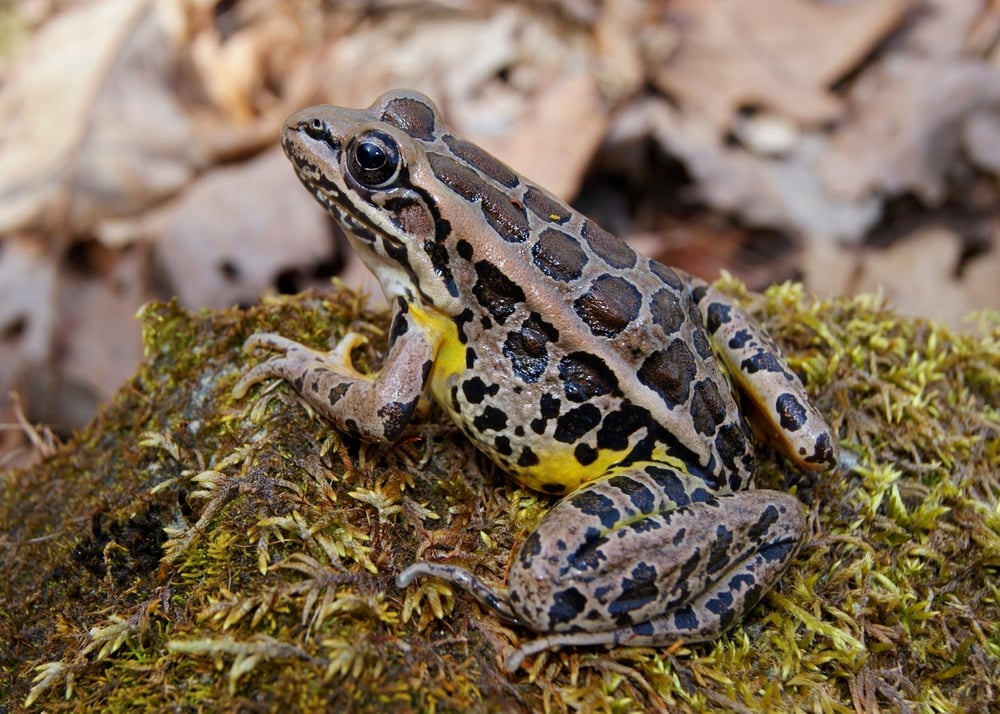
Are Pickerel Frogs Poisonous to Humans?
The secretions that they use for defense on their skin are poisonous though they are not potentially dangerous to humans. They can only make your skin irritate but they can kill small animals including their predators.
#7. Fowler’s Toad
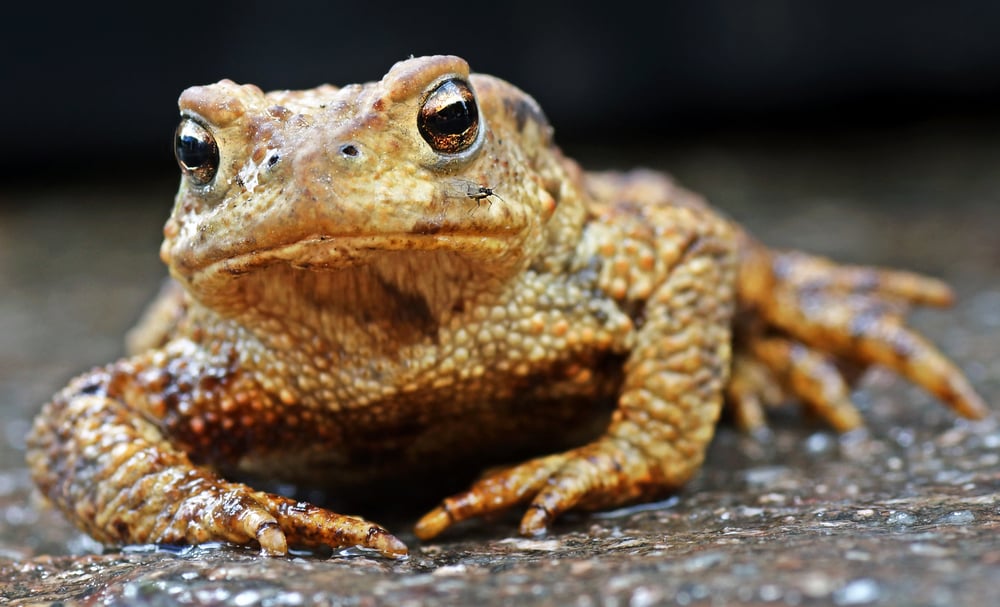
Scientifically known as Anaxyrus fowleri, you can easily confuse this with the American toad but their distinct features on the back are what bring out the difference.
The Fowler’s toad is common in Pennsylvania. You cannot stay in Pennsylvania without encountering these types of frogs unless they are hibernating in winter.
Identifying Characteristics and Facts
- Fowler’s Toad has 3 -4 bumps per blotch.
- Their color is gray to beige with white or cream bellies.
- They are nocturnal and active at night.
- Adult fowler toads are between 5.1 – 9.4 cm in size.
- They have short legs and dry skin.
- They are mostly found in sandy shorelines, wooden areas, and agricultural fields.
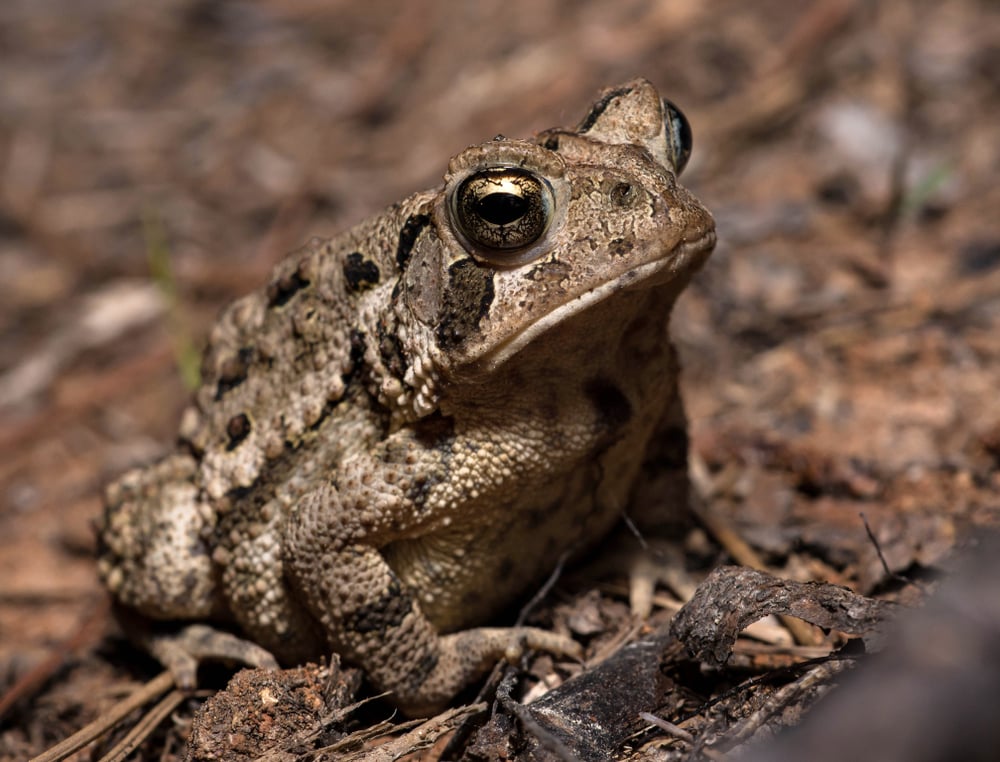
Are Fowlers Toads Poisonous?
Yes, to the predators, this frog secretes some toxic substances that they use for defense but are not harmful to humans. However, if they get into contact with your eyes or the other sensitive parts of your body, it can cause some severe irritation.
#8. American Toad
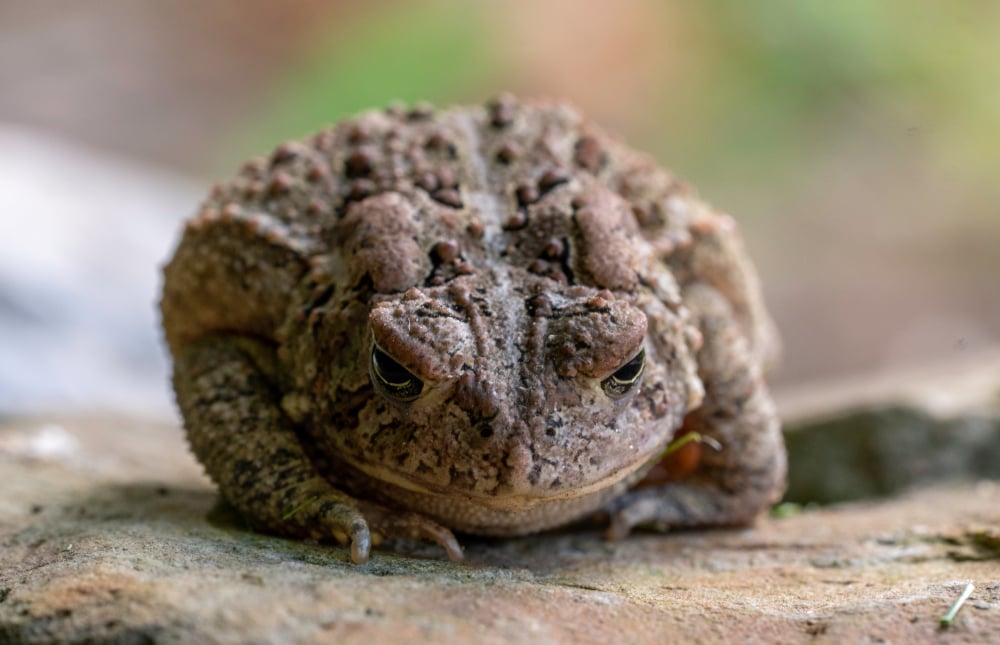
Scientifically known as Anaxyrus americanus.
As I mentioned, it is easy to confuse the American toad with Fowler’s toad. These two have some matching characteristics but you will differentiate them if you observe closely.
Identifying Characteristics and Facts
- American Toad has 1- 2 bumps per blotch
- They have yellow to light white belly.
- The males are smaller in size than females.
- They are active during the night and in warm weather.
- American Toads have short legs.
- American Toads are about 2 – 4 inches in size.
- Most toads are common in lawns, gardens, and forests.
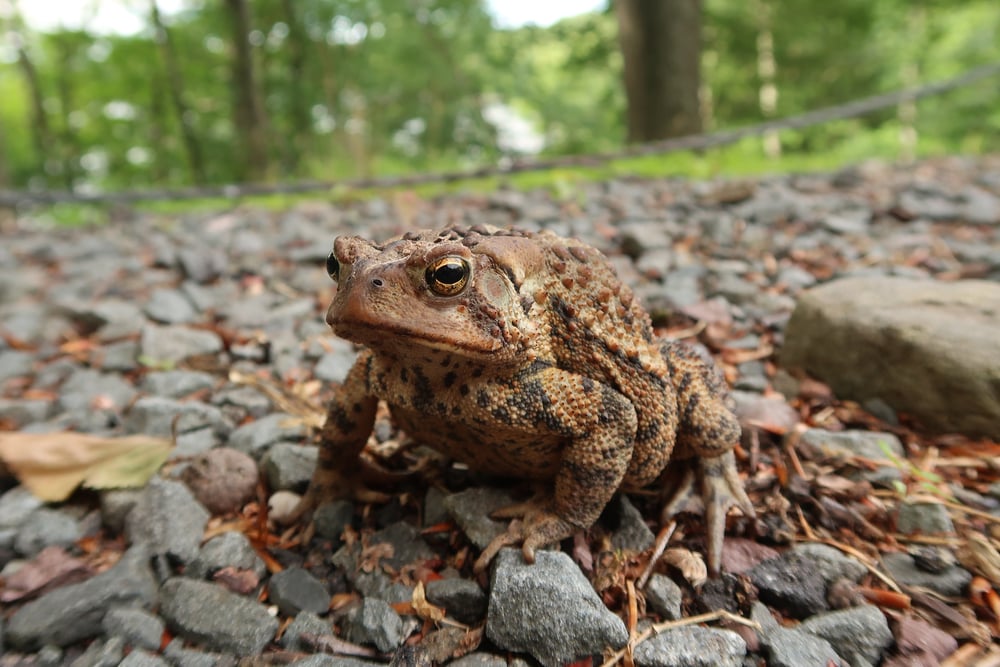
Are American Toads Poisonous?
The poison that they secrete from their glands is not potentially harmful to humans. They are, however, fatal to other small animals and predators.
These secretions if you touch them with your hand may not cause any harm but when you touch your eyes, that will cause uncomfortable irritation.
#9. Eastern Spadefoot
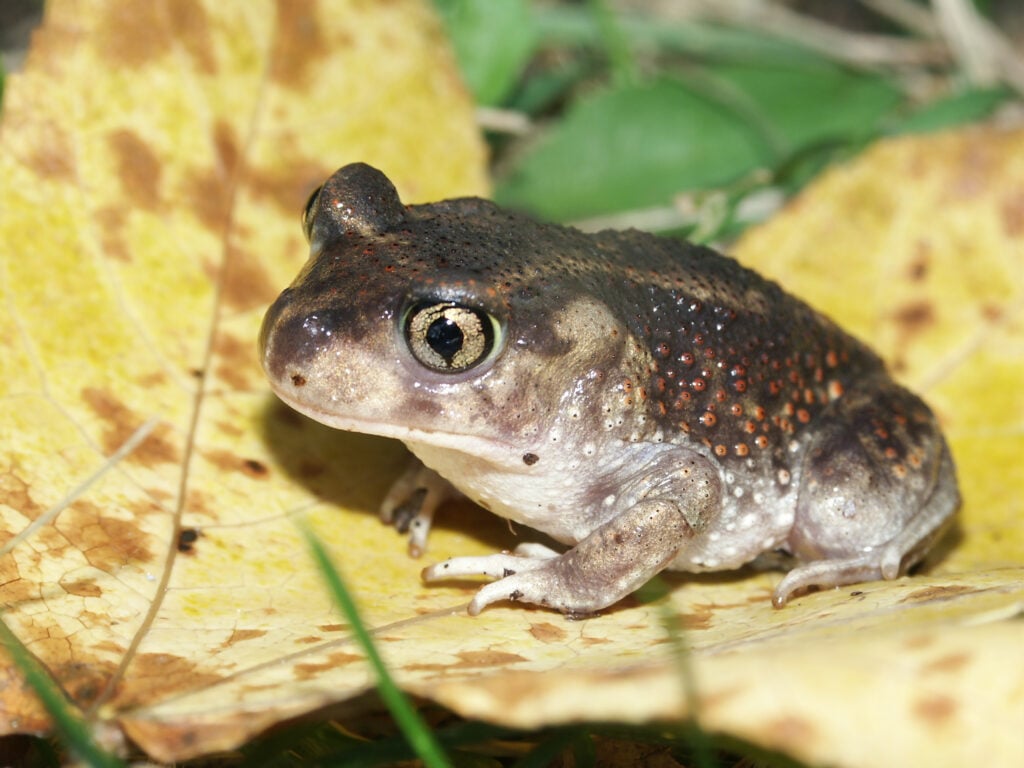
Scientifically known as Scaphiopus holbrookii, the Eastern spadefoot is another frog that you cannot miss to spot while in Pennsylvania, especially if you are a farmer.
They love to stay underground and when digging, you are likely to encounter them.
You can differentiate them from other toads due to their lack of parotoid glands. They also have distinct vertical pupils. It looks as though their eye sockets are protruding to hold the pupils slightly above the head.
Identifying Characteristics and Facts
- The Eastern Spadefoot has bright yellow large eyes.
- This frog has a small spur for digging on its rear legs.
- They live underground and spend most of their time there.
- The Eastern Spadefoot have moist and smooth skin with tiny warts.
- They are black to olive in color.
- This frog has a white or gray belly.
- They have short legs and large feet.
- This Eastern Spadefoot are between 4 – 8 cm in length.
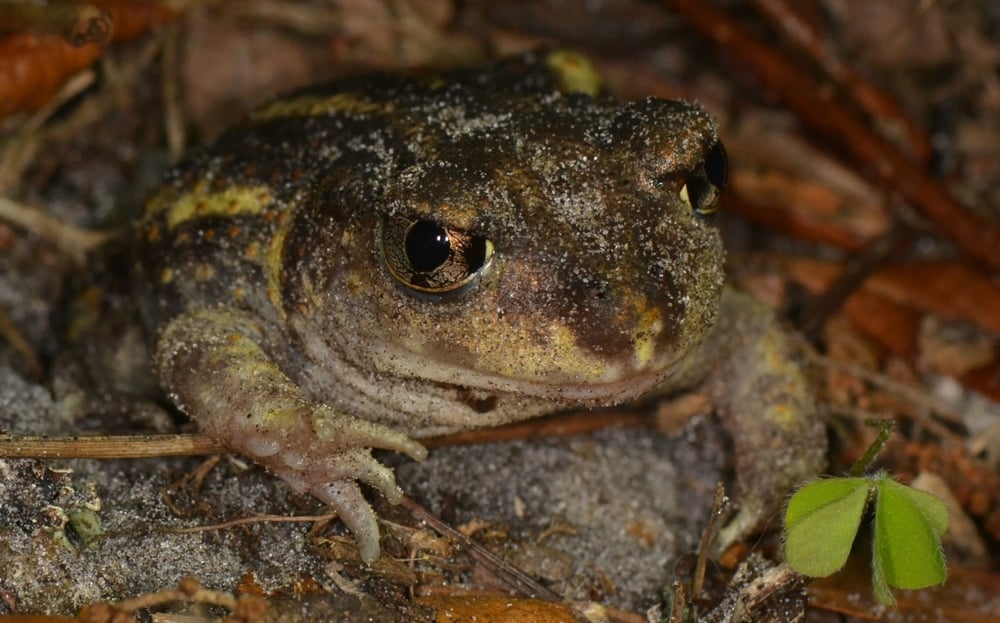
Is Eastern Spadefoot Poisonous?
Of course, just like their counterparts, this one is not an exception. It must survive predators and hence secrete harmful toxins for defense.
These toxins may cause irritation and uncomfortable feeling in humans but are rarely fatal.
If these secretions or toxins ever come into contact with your eyes, mouth, or nose, you will feel the itch and irritation that can be severe.
#10. Northern Leopard Frog
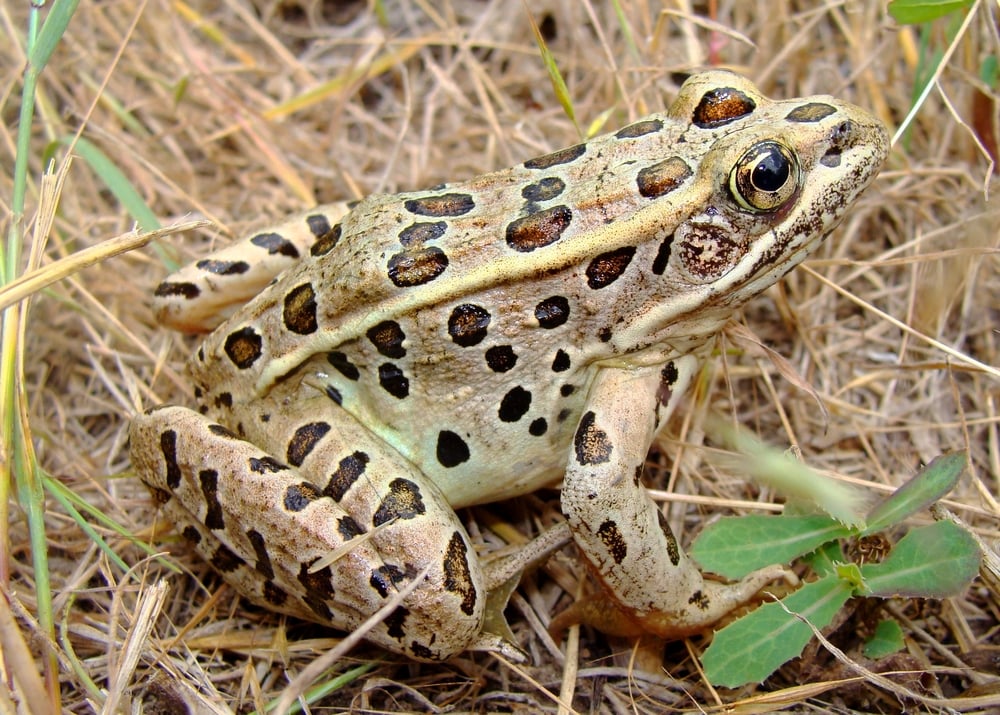
Scientifically known as Lithobates pipiens, the Northern Leopard is another frog that is common in Pennsylvania!
When you spot this frog, you will simply know why it is called the Northern leopard frog due to its leopard resemblance.
Identifying Characteristics and Facts
- The Leopard Frog is about 4.5 inches in length.
- This frog has green, brown, to yellow with leopard-like spots.
- The Leopard Frog has a white or cream belly.
- They live mostly in aquatic habitats.
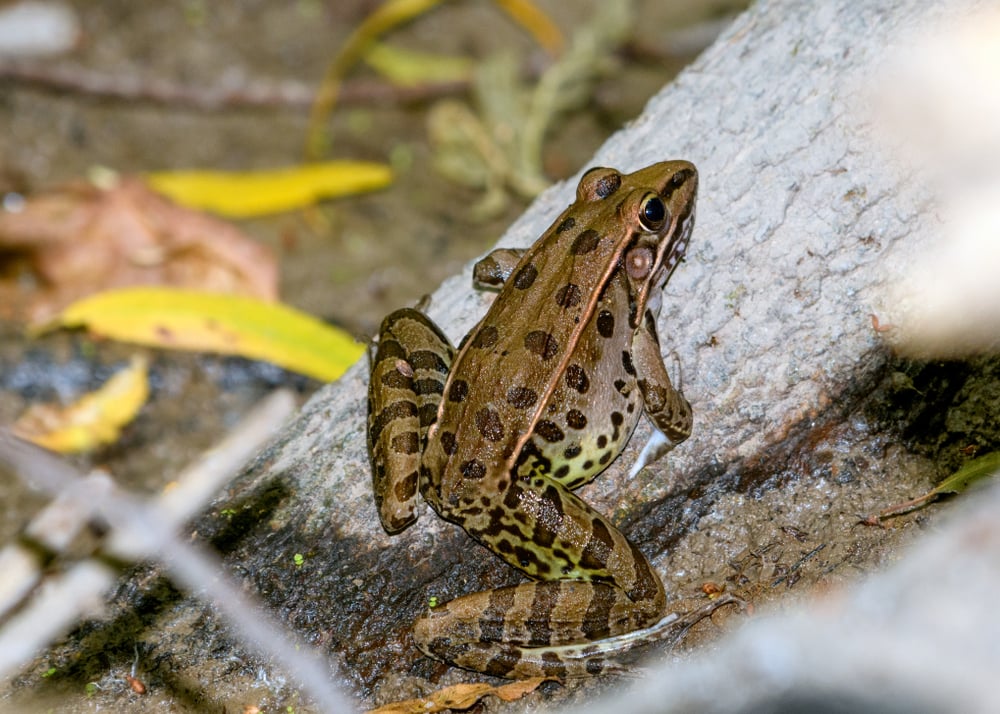
Is Northern Leopard Frog Poisonous?
The Northern leopard frog is only poisonous to their predators. To humans, however, they only transmit salmonella bacteria that can cause some other illnesses or diseases. They are also harmless to pets such as cats or dogs.
They are great indicators of the quality of the water in which they are found. They also perform a critical role in transferring nutrients between aquatic and terrestrial ecosystems and also feed on algae that are found in ponds among other aquatic environments.
Common Factors of the Most Common Frogs in Pennsylvania
As a reminder, the below factors are common for the most common frogs:
- Beneficial to the Environment
- Have similar characteristics to each other
- One of the easiest ways to identify frogs and toads is by the noises they make
- Are not poisonous, but shouldn’t be touched by humans or pets. Their secretion causes irritation to eyes and skin of humans and pets.